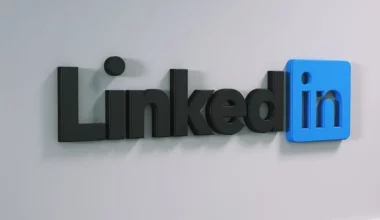In the realm of professional networking, LinkedIn has emerged as a powerful platform for businesses to connect with potential clients, recruit talent, and expand their brand presence. With over 700 million members worldwide, LinkedIn offers a unique advertising opportunity through its paid ads feature. Running paid ads on LinkedIn can help businesses reach a highly targeted audience of professionals and decision-makers. In this article, we will explore a step-by-step guide on how to effectively run paid ads on LinkedIn.
Define Your Advertising Objectives
Before diving into LinkedIn’s ad platform, it’s crucial to outline your specific goals and objectives. Are you aiming to generate leads, increase brand awareness, drive traffic to your website, or promote a specific product or service? Clearly defining your objectives will help you design an effective ad campaign and measure its success.
Understand LinkedIn Ad Formats
LinkedIn offers various ad formats to suit different campaign goals. Familiarize yourself with these formats, including Sponsored Content, Sponsored InMail, and Text Ads, and determine which one aligns best with your objectives. Sponsored Content appears as native ads in users’ LinkedIn feeds, Sponsored InMail delivers personalized messages to members’ inboxes, and Text Ads are displayed on the right-hand side of the LinkedIn interface.
Identify Your Target Audience
LinkedIn allows you to target your ads based on various criteria, such as
- Industry,
- Job title,
- Company size,
- Location, and more.
Identify your ideal audience based on relevant demographics and professional attributes. Consider factors like job titles, seniority levels, company types, and geographic locations. Precise targeting ensures that your ads reach the right people and maximize their impact.
Set Your Budget and Bidding Strategy
Determine your ad campaign budget based on your financial resources and advertising goals. LinkedIn’s ad platform enables you to set both daily and total campaign budgets. Additionally, choose a bidding strategy that aligns with your objectives. Options include
- Cost per click (CPC),
- Cost per impression (CPM), or
- Cost per send (CPS) for Sponsored InMail campaigns.
Create Compelling Ad Content
Crafting attention-grabbing ad content is crucial for driving engagement and conversions. Develop concise and compelling ad copy that resonates with your target audience. Highlight unique selling points, use clear and persuasive language, and include a strong call-to-action (CTA). Leverage eye-catching visuals, such as high-quality images or videos, to enhance the visual appeal of your ads.
Design Landing Pages
Ensure that your ad leads to a dedicated landing page that complements the ad’s message and objective. The landing page should provide visitors with relevant information and a seamless user experience. Optimize the page for conversions by incorporating a clear CTA, concise form fields, and compelling content.
Monitor and Optimize Your Campaign
Regularly monitor the performance of your LinkedIn ad campaign to gauge its effectiveness. LinkedIn’s campaign manager provides comprehensive analytics and performance metrics, such as impressions, clicks, click-through rates (CTRs), and conversions. Analyze this data to identify areas for improvement. Consider testing different ad variations, adjusting your targeting, or refining your ad content to optimize campaign performance.
Experiment with A/B Testing
A/B testing is a powerful strategy to refine your ad campaigns. Experiment with different variables, such as ad headlines, visuals, CTAs, or targeting parameters, to identify which elements resonate best with your target audience. By testing and iterating, you can continuously improve your campaign’s effectiveness and maximize your return on investment (ROI).
How much does it cost to run ads on LinkedIn

With its extensive targeting options and robust features, LinkedIn offers businesses the opportunity to run paid ads tailored to their specific goals. However, understanding the costs associated with running ads on LinkedIn is crucial to plan and allocate your advertising budget effectively. In this article, we will explore the factors that influence the cost of running ads on LinkedIn.
Ad Format and Bid Type
The type of ad format and bidding strategy you choose on LinkedIn significantly impacts the cost of your ad campaign. LinkedIn offers various ad formats, such as Sponsored Content, Sponsored InMail, and Text Ads. Each format has its own pricing structure. Sponsored Content and Sponsored InMail typically operate on a bidding system, where you can choose to bid on a cost-per-click (CPC) or cost-per-impression (CPM) basis. Text Ads, on the other hand, follow a cost-per-click model.
Targeting Parameters
LinkedIn provides robust targeting options that allow you to narrow down your audience based on specific criteria. The more specific your targeting parameters, such as industry, job title, location, and seniority level, the higher the cost of your ads may be. This is because narrower targeting increases the competition for the available ad inventory, driving up costs. However, precise targeting also ensures that your ads reach the most relevant audience.
Ad Campaign Budget
Your ad campaign budget plays a crucial role in determining the overall cost of running ads on LinkedIn. LinkedIn provides flexibility in setting both daily and total campaign budgets. By allocating a higher budget, you can reach a larger audience and potentially increase the visibility of your ads. It’s essential to align your budget with your advertising goals and ensure it is realistic based on your resources.
Ad Quality and Relevance
LinkedIn rewards ads that are of high quality and relevance to its users. The platform uses a relevance score to assess the quality and engagement level of your ads. The higher your relevance score, the lower the cost you may incur for each click or impression. Creating compelling and relevant ad content that resonates with your target audience can help improve your relevance score and potentially reduce your overall ad costs.
Ad Duration and Competition
The duration of your ad campaign and the level of competition in your target audience segment can also impact the cost of running ads on LinkedIn. Longer campaign durations may require a higher budget allocation. Additionally, if there is significant competition for your target audience, the cost of reaching them through ads may increase. Keeping an eye on market trends and adjusting your strategy accordingly can help manage costs effectively.
Geographic Location
The geographic location you target with your ads can influence the cost as well. Advertising to audiences in regions with higher competition or higher living costs may require a higher budget to achieve the desired reach and visibility. It’s important to consider regional variations and adjust your budget accordingly when targeting specific locations.
How to run LinkedIn ads for a client

As a marketer or agency, running LinkedIn ads for your clients can help them tap into this professional network and achieve their marketing objectives. You want to run paid ads on linkedIn, we will provide you with a step-by-step guide on how to run LinkedIn ads for your clients effectively.
Understand Your Client’s Objectives
Before diving into running LinkedIn ads, it is crucial to have a clear understanding of your client’s goals and objectives. Are they looking to generate leads, increase brand awareness, drive website traffic, or promote a specific product/service? Understanding their objectives will guide your entire ad strategy, from campaign setup to ad creative and targeting.
Define Target Audience and Segmentation
Work closely with your client to identify their target audience on LinkedIn. Consider factors such as industry, job titles, seniority, company size, and geographic location. Leverage LinkedIn’s robust targeting options to segment the audience effectively. The more specific and relevant your targeting, the better the results.
Select the Right Ad Format
LinkedIn offers different ad formats, including Sponsored Content, Sponsored InMail, and Text Ads. Collaborate with your client to determine the most suitable ad format for their goals and audience. Sponsored Content is ideal for increasing engagement in the LinkedIn feed, Sponsored InMail allows for personalized messages directly to members’ inboxes, and Text Ads offer a cost-effective option for specific campaigns.
Craft Compelling Ad Content
Create engaging and persuasive ad content that resonates with your client’s target audience. Develop attention-grabbing headlines, clear and concise copy, and compelling visuals. Ensure that the ad content aligns with your client’s brand identity and messaging. A strong call-to-action (CTA) should be included to drive desired user actions.
Set Up Your LinkedIn Campaign
Navigate to LinkedIn’s Campaign Manager and set up a new campaign. Define your campaign objective, budget, and bidding strategy. LinkedIn offers options like cost-per-click (CPC) and cost-per-impression (CPM). Choose the bid type that aligns with your client’s goals and budget. Determine the campaign start and end dates and allocate the budget accordingly.
Design and Optimize Landing Pages
Create dedicated landing pages that seamlessly align with the ad content. The landing page should provide relevant information and a clear conversion path. Optimize the landing page by keeping it mobile-friendly, ensuring fast load times, and incorporating a compelling CTA. Continuously monitor and test different landing pages to improve conversion rates.
Monitor and Optimize Campaign Performance
Regularly monitor your LinkedIn ad campaign’s performance to optimize its effectiveness. LinkedIn’s Campaign Manager provides comprehensive analytics and metrics, such as impressions, clicks, CTRs, and conversions. Analyze the data to identify areas for improvement. Optimize underperforming ads by adjusting targeting parameters, refining ad content, or testing new variations.
Provide Regular Reporting and Insights

As an agency or marketer, it is essential to provide your clients with regular reporting and insights on campaign performance. Prepare comprehensive reports that highlight key metrics, performance trends, and actionable recommendations. Discuss the results with your client, address any concerns, and collaborate on optimizing future campaigns.






